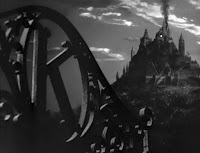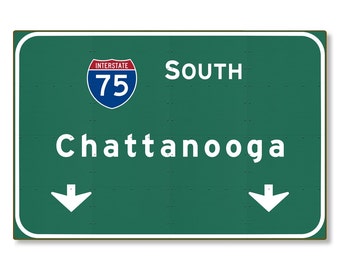Probable impossibilities are to be preferred to improbable possibilities. Aristotle
What do you know?! Haven't you heard of suspension of disbelief? Ed Wood, Ed Wood
Unfortunately, my disbelief is very heavy, and [at times] the suspension cable snap[s]. Roger Ebert
It only seems proper on Easter Sunday for SleuthSayers to focus on Ellery Queen. What? Some of you may ask. After all, the Queen mysteries were written by Frederic Dannay and Manfred B. Lee, who were born Daniel Nathan and Manford Lepofsky, respectively. Francis M. Nevins in Royal Bloodlines describes the two as follows: “Both were born in 1905, nine months and five blocks apart, of immigrant Jewish stock in a crowded Brooklyn tenement district.” So -- how do you get from there to Easter?
Well, while the basis for this remains an unsolved mystery, the holiday Easter is repeatedly referenced throughout the works of Queen. Those references, often hidden, could easily provide the basis for an Easter article. Unfortunately for me, that is an article that I have already written. Anyone wanting to re-visit (or visit) that previous discussion of Ellery Queen’s hidden (and mysterious) “Easter eggs” can do so by clicking
here.
My re-visit to the Queen library this Easter is a bit more attenuated. Easter is a holiday premised on faith and belief; acceptance of that which we might otherwise deem to be impossible. Faith is an oft analyzed foundation of religious belief. But it is there that mystery fiction and religion part ways. By and large mystery readers take little on “faith." Instead, mystery fiction requires a well-grounded basis for “belief” premised on demonstrable logic in order to explain the otherwise inexplicable and thereby keep the reader in tow.
When fiction is at its best it immerses the reader in a believable world, one in which we can live comfortably; where occurrences, clues and characters are of a sort that we would expect to encounter. But often laying the foundation for such a world presents a formidable challenge to the author. This is particularly so in Golden Age mysteries, such as those of Ellery Queen. It is hard to reasonably anticipate, for example, a reasonable world that offers up dying messages or locked rooms. When the otherwise unbelievable occurs in theology (think Easter) the devout among us often are able to answer incredulity with faith. For the mystery reader, however, it’s a bit tougher. And the preferred bridge to believe the otherwise unbelievable is the literary tool "suspension of disbelief.”
Suspension of disbelief, or willing suspension of disbelief, is a term coined in 1817 by the poet and aesthetic philosopher Samuel Taylor Coleridge, who suggested that if a writer could infuse a "human interest and a semblance of truth" into a fantastic tale, the reader would suspend judgement concerning the implausibility of the narrative.
The trick to the tool, as the above quote suggests, is that “semblance of truth” requirement. The reader has to be given just enough to go along with the plot device that otherwise presents as implausible. And as the quote from Roger Ebert at top of this article also suggests, if that semblance of truth proves insufficient to tempt the reader down the author’s intended path, well, the suspension cable snaps, risking the loss of the reader.
And that brings us back to Ellery Queen and a particular mystery where, at least for me, that cable has never been sufficient to withstand the load the authors demand of it. My reference is to the 1954 mystery
The Glass Village.
In over fifty years of reading Queen
The Glass Village has always been my personal stumbling block. Recently I confronted
The Glass Village again and, after previous failed attempts this time I finished the novel. But not without some grumblings.
Before getting to all of that, a little background is in order.
My latest confrontation with
The Glass Village began a couple months back after I wrote
a SleuthSayers article focusing on some underlying riffs in Ellery Queen’s Calamity Town. Looking back on the completed article, particularly in light of some very erudite comments offered by some SleuthSayers readers, I decided that it was a good time to re-visit not only
Calamity Town, but the Queen mysteries that immediately followed it. There was good reason for this re-visit. When I first started reading Queen in my teenage years the path I followed through Ellery’s adventures meandered a bit. Some volumes I checked out of the local library, but more often than not I acquired Ellery Queen mysteries piecemeal at used book fairs held often in my hometown of St. Louis, Missouri. (My Queen library still has many volumes from those book fares, each with a ten cent or twenty-five cent price inscribed inside of the cover.)
The upshot of this approach was that I read the Queen library as I acquired it, which is to say out of order. I skipped from The Siamese Twin Mystery to Double, Double, and then proceeded to The Player on the Other Side before going back to Calamity Town. It was years before I reached Cat of Many Tails. It occurred to me lately, however, that it would be interesting to re-read these works, particularly those written in the 1940s and 1950s, in the order that they were published. I set this course so that I could more clearly follow the nuanced changes in Dannay and Lee’s writing, and in Ellery’s character, particularly his humanization as he coped with his own mistakes in the early Wrightsville stories, confronted those human foibles in Cat of Many Tails, and then moved on through other works, ending with 1958’s The Finishing Stroke, once intended as the last Queen mystery.
In the midst of this span, is The Glass Village, published in 1954.
The Glass Village is a rarity among Queen mysteries. While there are many novels that profess to be “written” by Ellery Queen that do not feature Ellery and/or his father as essential characters, the vast majority of those books were not in fact written by Frederic Dannay and Manfred B. Lee. Rather they were the infamous works franchised out to other writers. The Dannay and Lee contributions to these decidedly inferior stories amounted to little more than some final editing. But there are two exceptions to this rule. And aside from the 1968 police procedural Cop Out, The Glass Village is the only novel written by Dannay and Lee as Ellery Queen that does not feature Ellery or the Inspector.
 |
| Frederic Dannay and Manfred B. Lee |
As an aside, reportedly this almost was not the case. There is, some evidence that
The Glass Village was originally intended as an Ellery Queen Wrightsville mystery that was then revised to remove Ellery and Wrightsville while the writing was already under way. (Indeed, the debut episode of
The Further Adventures of Ellery Queen, broadcast on NBC on September 26, 1958, is based on
The Glass Village and re-fashioned the story so that the detective-protagonist is, in fact, Ellery.) We can only speculate as to why Dannay and Lee decided on a different approach, but there are several possibilities. First, a key element of
The Glass Village requires a finite and limited number of town residents, something that would not have been possible in the context of the larger community of Wrightsville. Second, Dannay and Lee frankly may have been uneasy concerning the descent into mob mentality that
The Glass Village would have required of the residents of Wrightsville -- people Ellery often describes with admiration and affection. The story, after all, is an allegory to the McCarthy mania of the early 1950s, and Dannay and Lee may not have wanted the good citizens of Wrightsville to play the Mcarthy-ite roles required by the story.
So there were many reasons that I could have opted to avoid The Glass Village when I revisited Queen, principally revolving around the lack of Ellery. But it seemed to me that would be a bit unfair. The book was widely heralded, when published, as a celebration of 25 years of mysteries authored by Ellery Queen. And even though it is not directly part of the “Ellery as detective” canon, the authors made certain that it did not stray too far. Shinn Corners, the locale for the novel, is geographically close to Wrightsville, the town Ellery frequents, and we know this from references in Ellery’s Wrightsville novels. There are other hints that also tie the mystery back to those in which Ellery is present, and the young detective protagonist in Glass Village is fashioned with several knowing winks to the avid Queen reader. That character, “Johnny Shinn,” approaches the mystery as would Ellery, sports a name with the same number of characters as “Ellery Queen,” and one character in the The Glass Village persists in mispronouncing that last name as “Sheen.” In light of all of this I could only conclude that Dannay and Lee intended that I should read the book. So I (finally) did.
This brings us back to my problems with The Glass Village, which involve suspension of disbelief, how it works, and how sometimes it doesn’t. The Glass Village begins very well, and contains some excellent prose and believable characters, but to me it grinds to a halt mid-way when it asks of the reader a suspension of disbelief that simply cannot easily be delivered.
Specifically, a major premise of the story is that in order to calm the near riotous citizenry of Shinn Corners it is decided that a trumped-up trial must be conducted. Over the years each time I have attempted to read The Glass Village it is at this point that I roll my eyes, sigh, and set the book aside as my suspension cable snaps. I admit that a lot of this may be because I am an attorney, and the utter silliness of the kangaroo court imagined by Dannay and Lee and then convened in Shinn Corners has a particular personal grate to it. But there are problems here regardless of the reader’s background, and those problems (I believe) are sufficient that any reader, when asked to suspend disbelief, predictably would reply oh, come now!
For the “kangaroo trial” that is at the heart of
The Glass Village to work the reader must accept the novel’s premise that the small town of Shinn Corners is so geographically remote from the rest of the world that, over a course of days, no higher authority could or would enter the town to rescue a prisoner threatened by an enraged town bent on mob vigilantism, and further that no higher judicial or legal authority would intervene to stop a trial so strangely assembled that jurors also serve, at times, as witnesses during the proceeding. Indeed, the story requires us to believe that governmental authorities outside of Shinn Corners in fact agree to step back and leave the town to its own devices in order to forestall mob violence. The attempts to explain away this citadel isolation of Shinn Corners -- largely that the town has become a mob that threatens any outside authority that attempts to intrude -- is simply not credible. When would this ever occur in such a setting?
What police force, what State government, would back down in such a situation? In effect, Dannay and Lee ask us, the readers, to buy into a thinly concocted premise, since that premise is necessary in order for elements of the story to work. But the leap of faith, at least for me, is too great. All I can do is roll my eyes. The premise fails the “semblance of truth” requirement for suspending disbelief.
Sadly, this flaw in the mystery spoils the whole endeavor for some, myself included. And it needn’t have. All the plot needed was a better “semblance.” Queen did this well, for example, in The Siamese Twin Mystery, where the setting is necessarily isolated from the rest of the world by a forest fire. That provides enough of a semblance of truth for us to suspend disbelief and proceed with the novel. So, too, in And on the Eighth Day it is not difficult to accept the premise that the town of Quenan is geographically (and historically) isolated from the rest of the world for a reason, again, necessary to the story.
Could Queen have provided a better “semblance of truth” in The Glass Village? Well, clearly. Stephen King did so in his miniseries Storm of the Century, in which a town, located on a remote island off of the Maine coast, is isolated from the mainland by a believable storm. And there are models for Glass Village-like seclusion in the real world -- towns located on islands off the coast of England, for example, that are inaccessible for months during winter, or Smith and Tangiers Islands located in our own Chesapeake Bay. Constructing such a locale, and then using it as the setting for The Glass Village could have provided that “semblance of truth” and thereby saved countless rolling eyes.
Many, including my friend, Queen scholar and
emeritus law professor Francis Nevins, profess to have been able to move past this credibility stumbling block in
The Glass Village without grumblings, and have praised the rest of the work as a very superior mystery. And I recognize their point -- the character development and cluing are fine; the narrative otherwise sparkles. But for me, that is still a pretty significant “otherwise.” Some things I can take on faith. But for a mystery to work, I need a reasoned basis to stay on board the ship.
Ahh well. After all of these years I have finally completed The Glass Village. Eyes well exercised from rolling, it is time to move on.






















